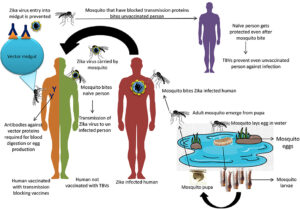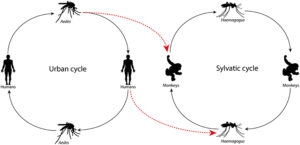Zollinger-Ellison Syndrome, often abbreviated as ZES, is a rare and complex condition that affects the digestive system. This disorder is characterized by the development of tumors in the pancreas or the upper part of the small intestine, which lead to excessive production of stomach acid. The overproduction of acid can result in severe ulcers in the stomach and the initial portion of the small intestine, known as the duodenum. In this article, we will explore the causes, symptoms, and treatments associated with this condition.


Understanding Zollinger-Ellison Syndrome
Zollinger-Ellison Syndrome is a medical condition that primarily impacts the gastrointestinal tract. It involves the formation of specific types of tumors, known as gastrinomas, which are responsible for producing an abnormal amount of a hormone called gastrin. Gastrin stimulates the stomach to produce acid, and when its levels become excessively high, it leads to the development of peptic ulcers.
The syndrome was first described in 1955 by two doctors, Robert Zollinger and Edwin Ellison, after whom the condition is named. While it is considered rare, affecting only one in every million people annually, its impact on those diagnosed can be significant if not properly managed.
How Does Zollinger-Ellison Syndrome Develop?
The primary cause of Zollinger-Ellison Syndrome lies in the presence of gastrinomas. These tumors typically develop in the pancreas or the duodenum, though they can also appear in other areas of the body. Gastrinomas are often linked to another condition known as multiple endocrine neoplasia type 1, which is a genetic disorder that increases the risk of developing tumors in various endocrine glands.
In individuals with Zollinger-Ellison Syndrome, the tumors release large amounts of gastrin into the bloodstream. This hormone signals the stomach to produce more acid than usual. The excess acid overwhelms the protective lining of the stomach and duodenum, leading to the formation of painful ulcers.
Symptoms of Zollinger-Ellison Syndrome
The symptoms of this condition are often similar to those of other gastrointestinal disorders, which can make diagnosis challenging. However, there are some key signs that may indicate the presence of Zollinger-Ellison Syndrome:
- Abdominal Pain: One of the most common symptoms is a burning or gnawing pain in the abdomen, often occurring between meals or at night.
- Diarrhea: Excessive stomach acid can interfere with the digestion of food, leading to frequent, watery stools.
- Nausea and Vomiting: Some individuals may experience nausea or vomiting, especially if ulcers have developed.
- Bleeding in the Digestive Tract: Severe cases may result in bleeding ulcers, which can cause blood in vomit or black, tarry stools.
- Weight Loss: Due to difficulties in digesting food, individuals may experience unintended weight loss.
It is important to note that these symptoms can vary in severity and may not always be immediately attributed to Zollinger-Ellison Syndrome. As a result, many individuals may initially be misdiagnosed with conditions such as gastroesophageal reflux disease or peptic ulcer disease.
Complications Associated with the Condition
If left untreated, Zollinger-Ellison Syndrome can lead to several complications, including:
- Perforation of the Stomach or Duodenum: Severe ulcers can create holes in the walls of the stomach or duodenum, allowing stomach contents to leak into the abdominal cavity.
- Bleeding: Persistent ulcers can cause significant blood loss, leading to anemia or requiring emergency medical intervention.
- Gastric Outlet Obstruction: Scarring from ulcers can narrow the passage between the stomach and the small intestine, causing blockages.
These complications highlight the importance of early diagnosis and treatment to prevent further damage to the digestive system.
Diagnosis of Zollinger-Ellison Syndrome
Diagnosing this condition requires a combination of clinical evaluation, laboratory tests, and imaging studies. Since the symptoms of Zollinger-Ellison Syndrome overlap with those of other gastrointestinal disorders, healthcare providers must conduct thorough assessments to confirm the diagnosis.
Initial Steps in Diagnosis
The diagnostic process typically begins with a detailed medical history and physical examination. Healthcare providers will inquire about the nature and duration of symptoms, as well as any family history of endocrine disorders. They may also perform blood tests to measure levels of gastrin and stomach acid.
Advanced Diagnostic Techniques
To pinpoint the location of gastrinomas and assess their size, specialized imaging techniques are often used. These include:
- Endoscopic Ultrasound: This procedure uses sound waves to create images of the digestive tract and surrounding tissues, helping to identify tumors.
- CT or MRI Scans: These imaging tests provide detailed pictures of the abdomen and can help locate tumors in the pancreas or duodenum.
- Somatostatin Receptor Scintigraphy: A nuclear medicine test that uses radioactive tracers to detect tumors expressing somatostatin receptors.
In some cases, a biopsy may be performed to analyze tissue samples and determine whether the tumors are benign or malignant.
Treatment Options for Zollinger-Ellison Syndrome
The treatment of Zollinger-Ellison Syndrome focuses on managing symptoms, reducing acid production, and addressing the underlying tumors. A multidisciplinary approach involving gastroenterologists, endocrinologists, and surgeons is often required to provide comprehensive care.
Medications to Control Acid Production
One of the primary goals of treatment is to reduce the excessive production of stomach acid. Medications commonly prescribed for this purpose include:
- Proton Pump Inhibitors: These drugs block the enzyme in the stomach wall that produces acid, effectively lowering acid levels and promoting ulcer healing.
- H2 Receptor Blockers: These medications work by reducing the amount of acid released by the stomach cells.
Patients may need to take these medications long-term to manage their symptoms and prevent complications.
Surgical Interventions
In cases where tumors are identified, surgical removal may be recommended. Surgery is particularly beneficial if the tumors are localized and have not spread to other parts of the body. Procedures may include:
- Tumor Resection: Removing the gastrinomas to eliminate the source of excessive gastrin production.
- Total Gastrectomy: In severe cases where acid production cannot be controlled through medication, the entire stomach may need to be removed.
Surgery is often combined with other treatments to achieve the best possible outcomes.
Management of Multiple Endocrine Neoplasia Type 1
For individuals with Zollinger-Ellison Syndrome associated with multiple endocrine neoplasia type 1, additional monitoring and treatment may be necessary. Regular screenings for tumors in other endocrine glands, such as the parathyroid and pituitary glands, are essential to detect and manage potential complications early.
Lifestyle Modifications
While medications and surgery form the cornerstone of treatment, lifestyle changes can also play a supportive role in managing the condition. These may include:
- Avoiding foods and beverages that trigger acid production, such as caffeine, alcohol, and spicy foods.
- Eating smaller, more frequent meals to reduce the burden on the digestive system.
- Quitting smoking, as it can exacerbate symptoms and delay ulcer healing.
By adopting these changes, individuals can improve their quality of life and reduce the frequency of flare-ups.
Ongoing Research and Future Directions
Research into Zollinger-Ellison Syndrome continues to evolve, with scientists exploring new ways to diagnose and treat the condition. Advances in genetic testing have improved the ability to identify individuals at risk of developing the syndrome, while innovations in targeted therapies offer hope for more effective tumor management.
Additionally, ongoing clinical trials are investigating novel medications and treatment approaches that could enhance patient outcomes. By staying informed about these developments, individuals with the condition and their healthcare providers can make more informed decisions about care.





